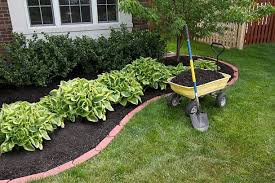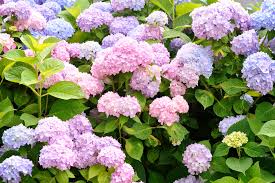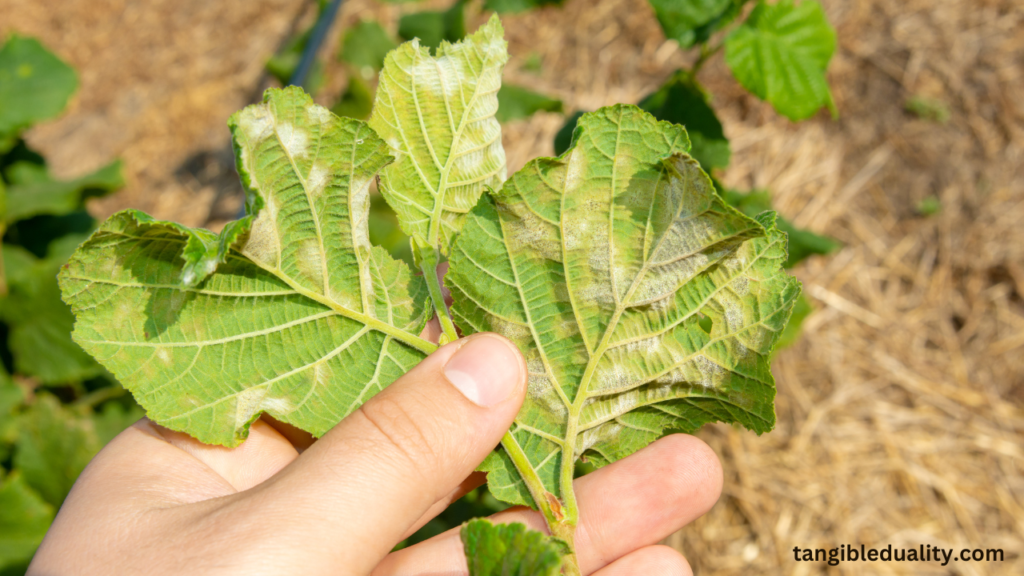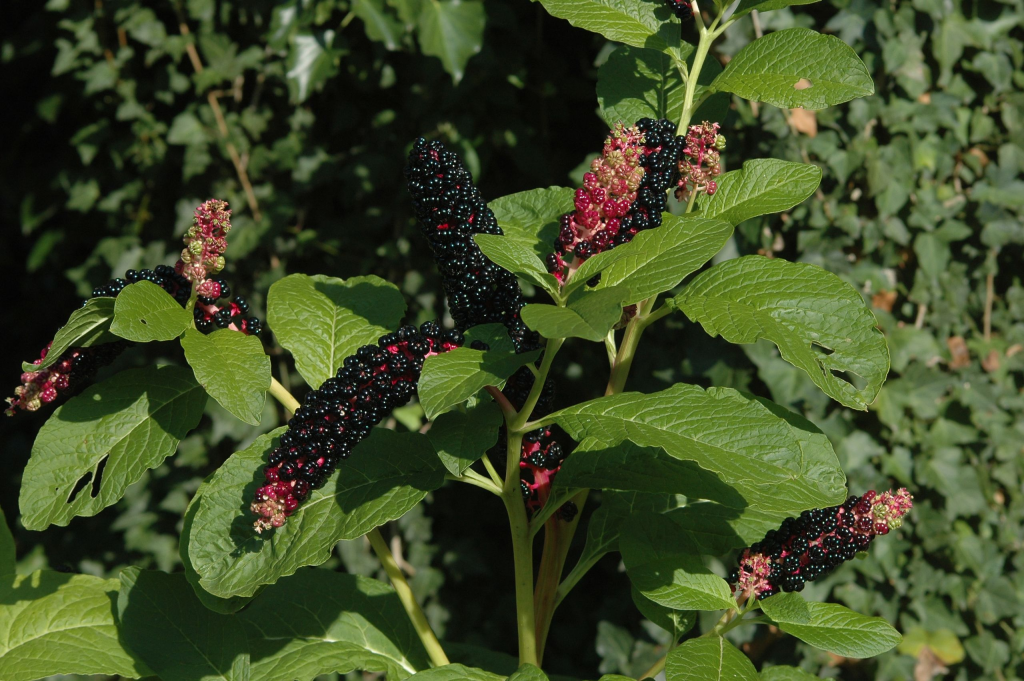Introduction
- Hook: Highlight the importance of landscape maintenance in preserving the beauty and health of outdoor spaces.
- Significance: Emphasize the challenges homeowners face in maintaining their landscapes and the benefits of expert strategies.
- Overview: Provide a brief overview of the upcoming expert tips for effective landscape maintenance.

Tip 1: Soil Health and Amendment
- Explanation: Discuss the importance of soil health in supporting plant growth and vitality.
- Soil Testing: Explain the process of soil testing and how it helps determine soil composition and nutrient levels.
- Amendment Techniques: Provide tips for improving soil quality through organic amendments and composting.
- Benefits: Highlight the benefits of healthy soil for plant growth, water retention, and overall landscape resilience.
Alright, let’s dig into the dirt – because healthy soil is the foundation of a thriving landscape. It’s like laying down a solid groundwork for your plants to flourish. Here’s the scoop:
Explanation: So, picture this: your plants are like houseguests, and the soil is their cozy home. You want to make sure it’s a welcoming environment, rich in nutrients and teeming with life. That’s where soil health comes in. It’s not just dirt – it’s a living ecosystem that supports plant growth and vitality.
Soil Testing: Now, before you start amending your soil, it’s a good idea to get to know it a little better. Think of it like giving your soil a check-up at the doctor’s office. A soil test will tell you important things like its pH level, nutrient content, and texture. Armed with this knowledge, you can make informed decisions about how to improve your soil.
Amendment Techniques: So, let’s talk about giving your soil a boost. Just like adding vitamins to your diet, organic amendments like compost, aged manure, and organic matter can help replenish nutrients and improve soil structure. It’s like giving your soil a nutritious meal – it’ll thank you by providing a healthy home for your plants.
Benefits: By focusing on soil health and amendment, you’re setting the stage for a landscape that’s bursting with life and color. Healthy soil means happy plants, better water retention, and fewer pest and disease problems. It’s like laying down the welcome mat for your plants and inviting them to put down roots and thrive!

Tip 2: Proper Plant Selection and Placement
- Selection Criteria: Discuss factors to consider when choosing plants, including climate, soil type, and sun exposure.
- Plant Diversity: Emphasize the importance of diversity in plant selection for a balanced and resilient landscape.
- Placement Guidelines: Provide guidelines for proper plant placement based on mature size, growth habit, and aesthetic considerations.
- Design Principles: Introduce basic design principles for creating visually appealing and functional landscapes.
Alright, let’s talk about picking the right plants and giving them their own little slice of paradise in your landscape. It’s like playing matchmaker – finding the perfect plant for the perfect spot. Here’s how to do it:
Selection Criteria: First things first, you want to choose plants that are compatible with your climate, soil type, and sun exposure. Think of it like picking out clothes – you wouldn’t wear a heavy sweater to the beach, right? Similarly, you want plants that are suited to the conditions in your garden.
Plant Diversity: Now, let’s talk about mixing things up. Diversity is the spice of life, and it’s essential in landscaping too. By incorporating a variety of plants with different colors, textures, and bloom times, you’ll create a landscape that’s both visually interesting and ecologically resilient. It’s like hosting a party where every guest brings something unique to the table.
Placement Guidelines: Once you’ve chosen your plants, it’s time to find the perfect spot for them to call home. Consider factors like mature size, growth habit, and water requirements when deciding where to plant each species. It’s like arranging furniture in a room – you want everything to flow together harmoniously.
Design Principles: And finally, let’s talk about design. Landscaping is like painting a picture – you want to create a beautiful composition that’s pleasing to the eye. Think about things like balance, proportion, and focal points when planning your landscape. It’s like creating a work of art that you can enjoy every time you step outside.
By selecting the right plants and placing them thoughtfully in your landscape, you’ll create a beautiful and functional outdoor space that you can enjoy for years to come. It’s like curating your own little slice of paradise right in your backyard!

Tip 3: Watering Efficiency and Irrigation Systems
- Watering Needs: Discuss the importance of watering frequency and duration based on plant type, season, and weather conditions.
- Efficient Practices: Provide tips for efficient watering techniques, such as deep watering, mulching, and using drip irrigation systems.
- Smart Irrigation Technology: Introduce modern irrigation technologies, such as smart controllers and weather sensors, for optimizing water use.
- Conservation Strategies: Highlight the importance of water conservation in landscape maintenance and strategies for reducing water waste.
Alright, let’s talk about keeping your plants hydrated without wasting a drop. It’s like finding the perfect balance – not too much, not too little, just right. Here’s how to do it:
Watering Needs: Picture your plants on a hot summer day – they’re thirsty, but you don’t want to drown them. Understanding your plants’ watering needs is key. Some like it wet, while others prefer to dry out between drinks. So, get to know your plants and water accordingly.
Efficient Practices: Now, let’s talk about watering smart. Deep watering encourages plants to grow strong roots, so aim to water deeply and infrequently rather than shallowly and often. Mulching around your plants can also help retain moisture in the soil and reduce water evaporation. And if you really want to up your watering game, consider installing a drip irrigation system – it delivers water right to the roots where it’s needed most, without wasting a drop.
Smart Irrigation Technology: Speaking of drip irrigation systems, modern technology has made watering your garden easier and more efficient than ever. Smart controllers can adjust watering schedules based on weather forecasts, soil moisture levels, and plant needs, ensuring your plants get just the right amount of water at the right time. It’s like having a personal assistant for your garden – always there to take care of your plants’ hydration needs.
Conservation Strategies: And finally, let’s talk about conserving water. In a world where every drop counts, it’s important to use water wisely in the garden. Consider collecting rainwater in barrels to use for watering your plants, and avoid watering during the heat of the day when water is most likely to evaporate. Every little bit helps when it comes to conserving water and protecting this precious resource for future generations.
By watering your plants efficiently and using water wisely, you’ll not only save time and money but also help conserve water and create a healthier environment for your plants to thrive in. It’s like giving your garden a refreshing drink without wasting a single drop!

Tip 4: Integrated Pest Management (IPM)
- IPM Principles: Explain the concept of integrated pest management and its role in sustainable landscape maintenance.
- Monitoring and Identification: Discuss the importance of regular pest monitoring and accurate pest identification for effective management.
- Cultural Controls: Provide strategies for preventing pest problems through cultural practices, such as proper plant spacing and sanitation.
- Least-toxic Controls: Introduce least-toxic pest control methods, including biological controls, botanical insecticides, and insecticidal soaps.
Alright, let’s chat about dealing with those pesky garden invaders without reaching for the chemical sprays. It’s like playing detective – figuring out who the culprit is and how to stop them in their tracks. Here’s how to do it:
IPM Principles: First things first, let’s talk about integrated pest management (IPM). It’s a fancy way of saying we’re going to use a combination of strategies to keep pests under control. Instead of relying solely on pesticides, we’re going to take a more holistic approach that considers the entire ecosystem of your garden.
Monitoring and Identification: Now, let’s get out our magnifying glass and do a little detective work. Regular monitoring is key to catching pest problems early, before they have a chance to get out of hand. Keep an eye out for signs of pest activity – chewed leaves, sticky residue, or suspicious holes in your plants. Once you’ve identified the culprit, you can come up with a plan to deal with them.
Cultural Controls: Next up, let’s talk about preventing pest problems before they even start. Cultural controls are like preventative medicine for your garden. Things like proper plant spacing, good sanitation practices, and crop rotation can help keep pests at bay by creating an environment that’s less hospitable to them. It’s like making your garden as unwelcoming to pests as possible – they’ll get the hint and go bother someone else.
Least-toxic Controls: And finally, let’s talk about using the least-toxic methods possible to control pests. Instead of reaching for the harsh chemicals right away, try starting with the least-toxic options first. Things like insecticidal soaps, botanical insecticides, and biological controls can be effective at managing pest populations without harming beneficial insects or the environment.
By taking a proactive approach to pest management and using a combination of strategies, you can keep your garden healthy and pest-free without resorting to chemical sprays. It’s like being the Sherlock Holmes of your garden – solving mysteries and keeping your plants safe and sound!

Tip 5: Pruning and Plant Care
- Pruning Basics: Discuss the importance of regular pruning for maintaining plant health, shape, and size.
- Pruning Techniques: Provide guidelines for proper pruning techniques, including timing, tools, and pruning cuts.
- Plant Care Practices: Discuss essential plant care tasks, such as fertilization, mulching, and disease management.
- Seasonal Maintenance: Outline seasonal maintenance tasks for different types of plants and landscape features.
Alright, let’s get our gardening gloves on and give our plants a little TLC. It’s like giving them a haircut and a spa day rolled into one. Here’s how to keep your plants looking their best:
Pruning Basics: First things first, let’s talk about pruning. It’s like giving your plants a trim to keep them looking neat and tidy. Pruning helps remove dead or diseased branches, encourages new growth, and shapes your plants to enhance their natural beauty. Just remember to use clean, sharp tools and make clean cuts to avoid damaging your plants.
Pruning Techniques: Now, let’s get into the nitty-gritty of pruning techniques. Different plants require different pruning methods, so it’s important to know what you’re doing. For shrubs and trees, you’ll want to prune for structure and form, removing any crossing or rubbing branches. For flowering plants, you’ll want to prune to encourage more blooms and prevent them from getting too leggy. And for fruit trees, you’ll want to prune to improve fruit production and tree health.
Plant Care Practices: While you’re at it, why not give your plants a little extra love? Things like fertilizing, mulching, and disease management can go a long way in keeping your plants healthy and happy. Just remember to follow the instructions on any fertilizers or pesticides you use, and always be mindful of your plants’ specific needs.
Seasonal Maintenance: And don’t forget about seasonal maintenance. Just like you, your plants have different needs throughout the year. In the spring, they might need a little extra pruning and fertilizing to kickstart their growth. In the summer, they’ll appreciate some extra mulch to keep their roots cool and moist. And in the fall, they’ll need some TLC to prepare for the winter months ahead.
By taking the time to prune and care for your plants, you’ll not only keep them looking their best but also promote healthy growth and flowering. It’s like giving your plants a little extra love and attention – they’ll thank you for it with lush foliage and beautiful blooms!

Tip 6: Sustainable Landscaping Practices
- Environmental Benefits: Discuss the environmental benefits of sustainable landscaping, including water conservation, habitat creation, and carbon sequestration.
- Native Plant Landscaping: Highlight the importance of using native plants in landscaping for their low maintenance requirements and ecological value.
- Drought-tolerant Landscaping: Provide tips for designing and maintaining drought-tolerant landscapes that require minimal water inputs.
- Wildlife-friendly Features: Introduce wildlife-friendly landscaping features, such as pollinator gardens, bird feeders, and habitat structures.
Alright, let’s talk about gardening in harmony with nature – it’s like being a good neighbor to the environment. Here’s how to create a sustainable landscape that’s as good for the planet as it is for your plants:
Environmental Benefits: First off, let’s talk about the perks of sustainable landscaping. By working with nature instead of against it, you can create a landscape that’s not only beautiful but also beneficial for the environment. Think improved air and water quality, increased biodiversity, and reduced carbon footprint – it’s like giving back to Mother Nature in your own backyard.
Native Plant Landscaping: One of the best ways to practice sustainable landscaping is by using native plants. These are the plants that have evolved to thrive in your local climate and soil conditions, so they require less water, fertilizer, and pesticides to stay healthy. Plus, they provide food and habitat for native wildlife, helping to support local ecosystems.
Drought-tolerant Landscaping: Another key aspect of sustainable landscaping is designing with water conservation in mind. Drought-tolerant plants are like the camels of the plant world – they can go for long periods without water and still look fabulous. By incorporating these water-wise plants into your landscape, you can reduce your water usage and save money on your water bill.
Wildlife-friendly Features: Finally, let’s talk about creating a haven for wildlife in your garden. Things like pollinator gardens, bird feeders, and wildlife habitats can attract beneficial insects, birds, and other critters to your yard. Not only does this make your garden more interesting and vibrant, but it also helps support local biodiversity and ecosystem health.
By embracing sustainable landscaping practices, you can create a beautiful and eco-friendly garden that’s as good for the planet as it is for your plants. It’s like being a green superhero in your own backyard – saving the planet, one garden at a time!

Tip 7: Seasonal Maintenance Calendar
- Spring: Outline spring maintenance tasks, including pruning, fertilization, and planting.
- Summer: Discuss summer maintenance tasks, such as watering, mulching, and pest monitoring.
- Fall: Provide guidelines for fall maintenance activities, including leaf removal, bulb planting, and lawn care.
- Winter: Highlight winter maintenance tasks, such as protecting plants from frost, winter pruning, and planning for spring.
Alright, let’s talk about staying on top of your gardening game all year round – it’s like having a calendar of fun activities for your garden! Here’s how to keep your plants happy and healthy no matter the season:
Spring: Ah, springtime – the season of renewal! It’s time to wake up your garden from its winter slumber. Start by tidying up any debris left over from winter, pruning back dead branches, and giving your plants a good feed of fertilizer to kickstart their growth. It’s like giving your garden a fresh start for the new season.
Summer: Now that summer’s in full swing, it’s all about keeping your garden cool and hydrated. Water your plants deeply and regularly, especially during hot, dry spells. Mulch around your plants to help retain moisture in the soil and keep weeds at bay. And don’t forget to keep an eye out for pests and diseases – they love the warm weather just as much as your plants do!
Fall: As the leaves start to change color and the temperatures cool down, it’s time to start preparing your garden for winter. Rake up fallen leaves and compost them to create nutrient-rich mulch for your garden. Plant spring-flowering bulbs like tulips and daffodils for a burst of color next year. And don’t forget to give your lawn a little extra love with aeration and overseeding to keep it healthy through the winter months.
Winter: Even though it might seem like your garden is asleep during the winter, there’s still plenty you can do to keep it happy and healthy. Prune dormant trees and shrubs to improve their shape and structure. Protect tender plants from frost with frost cloth or a layer of mulch. And take some time to plan and dream about next year’s garden – it’s like planting the seeds of inspiration for the seasons to come.
By following a seasonal maintenance calendar, you can stay ahead of the game and keep your garden looking its best all year round. It’s like having a roadmap to gardening success – guiding you through the seasons and helping you create a beautiful and thriving outdoor space!

Tip 8: Professional Landscape Care and Consultation
- Benefits of Professional Care: Discuss the benefits of hiring professional landscape care services for specialized tasks and expertise.
- Consultation Services: Introduce landscape consultation services for homeowners seeking personalized advice and guidance.
- DIY vs. Professional Care: Provide tips for determining when to DIY landscape maintenance tasks and when to seek professional help.
- Finding Qualified Professionals: Offer guidance on finding reputable landscape care professionals and contractors.
Alright, let’s talk about calling in the pros – it’s like having a team of gardening experts at your beck and call. Here’s how professional landscape care and consultation can take your garden to the next level:
Benefits of Professional Care: First off, let’s talk about the perks of hiring professional landscape care services. These folks are like the superheroes of the gardening world – they have the knowledge, skills, and experience to tackle even the toughest garden challenges. From pruning trees to designing new landscapes, they can handle it all with ease.
Consultation Services: Now, let’s talk about getting some expert advice for your garden. A consultation with a landscape professional is like having a personalized roadmap for your garden. They can help you identify problem areas, suggest improvements, and come up with a plan to achieve your gardening goals. Whether you’re starting from scratch or just need a little guidance, a consultation can help set you on the right path.
DIY vs. Professional Care: Of course, you might be wondering whether it’s worth it to hire a professional or tackle your garden projects yourself. It really depends on your skill level, time availability, and budget. Some tasks, like pruning or lawn care, can be easily DIYed with the right tools and know-how. But for more complex projects or if you’re short on time, it might be worth investing in professional care to get the job done right.
Finding Qualified Professionals: Lastly, let’s talk about finding the right professionals for the job. Not all landscapers are created equal, so it’s important to do your homework and find someone who’s qualified, experienced, and reputable. Ask for recommendations from friends and neighbors, check online reviews, and don’t be afraid to interview multiple professionals before making your decision.
By enlisting the help of professional landscape care services, you can take the stress out of gardening and enjoy a beautiful and well-maintained outdoor space all year round. It’s like having a secret weapon in your gardening arsenal – helping you create the garden of your dreams with ease and confidence!

Conclusion
- Summary of Tips: Recap the eight expert tips for maintaining a healthy and vibrant landscape.
- Encouragement: Encourage readers to apply these expert strategies to their own landscapes and experiment with sustainable practices.
- Closing Statement: Reinforce the importance of ongoing maintenance and care in creating beautiful, sustainable, and resilient landscapes that enhance outdoor living spaces.

